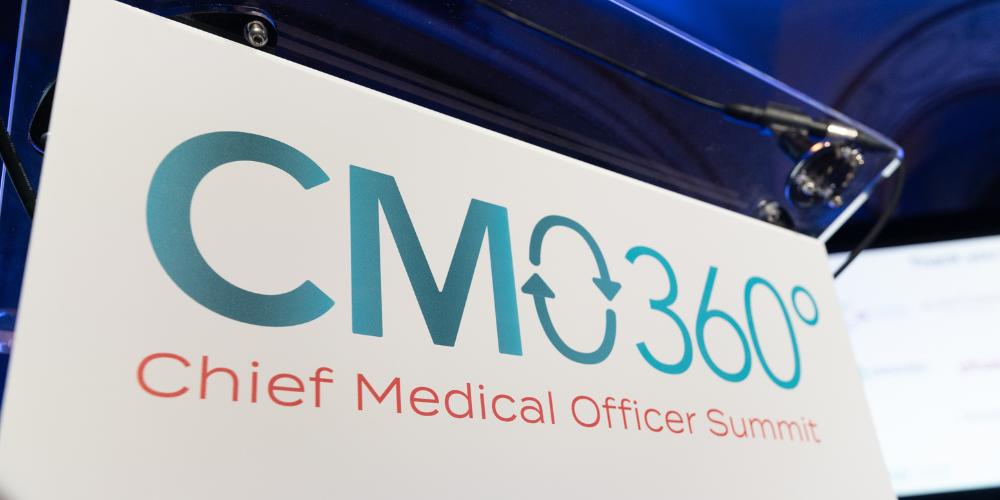
Walk us through the merger between Viewpoint and Isoray to create Prospective Therapeutics.
Part of my job as CEO of Viewpoint was to ensure that the company could be ready for some kind of transaction – SPAC, IPO, reverse merge or direct merge acquisition. That includes having compelling and audited or auditable data and valuations handy and having key opinion leaders on board. So my first role was to figure out what the company looks like and how we prepare for these options while running the business. The second part was to think about how to access capital to move things forward.
At some point in May or June last year, a banker at Oppenheimer reached out and asked if we would be open to a merger. Our readiness to file based on those prepared data and financials put us into the consideration set.
What happened next?
We then had the management teams meet and get a sense of each others’ corporate values. For any merger, you are trying to merge two cultures together so it is critical that they at least be close to each other. We felt there was a pretty good cultural fit and also both companies shared the belief in best possible isotope. Isoray was using Cesium-131, which is a differentiated isotope for brachytherapy where pellets are placed inside the prostate gland and irradiated from the inside out. Viewpoint’s approach is to use Pb-212, an alpha-emitter, to target cancer from the inside out as well.
With that shared culture and belief, we decided to get into formal talks and have management teams, lawyers and data scientists get to know each other to see if this could work. Once a definitive agreement was signed, it went to a shareholder vote.
Are there specific differences when it comes to a merger versus financing or partnership?
The huge difference is that it’s not just someone doing diligence on you. You need to do diligence on them too. If we were going for an IPO, we would need to get everything ready for people to look at us. The extra onus in a merger is to identify what you are getting from the other company. What kind of people? What are the new liabilities? Is there a superfund site? Do they have a wave of employment lawsuits? What is their history? For Isoray, we found that it was a well-run company looking to expand their pipeline. We thought a merger would lever existing expertise in radiation, radioactive product, supply chain, regulatory and QA.
"If we were going for an IPO, we would need to get everything ready for people to look at us. The extra onus in a merger is to identify what you are getting from the other company."
How do you determine a good fit for a merger between companies?
Culture fit is a big one. Often during a merger the personalities of the C-suite can cause things to derail. It’s our fiduciary duty to facilitate the merger assuming it makes sense for the company regardless of who will get what job at the end of it. Rarely do you get to vote on your colleagues but at these meetings you are meeting your potential future colleagues so ensuring a fit is really important.
Where does the CMO or CSO voice fit into this conversation about mergers?
Both in deciding to go through with something like this and while evaluating another company through the merge process. In this case, Isoray was looking at a very robust balance sheet in finding growth opportunities. Their scientific officers were asking if companies could differentiate the science and whether the science tells a credible story before diverting resources to another program.
For our CMO, it was about understanding what was being presented to us. Here is an existing business. How does it fit into our patient paradigm? Are we putting in something that will displace this? Is this a technology that we can get behind professionally and personally and believe actually has patient benefit? Is the science solid? And so, the first round of diligence for any management team is all about ensuring the science and data fit.
How do you prioritize the development program of the different assets for the newly merged entity?
You need good portfolio discipline. With any development program, you generally want to avoid high-risk/high-return. If that’s your only choice, take your moonshot. But as you build a matrix and analyze it, you’re going to reach a point with more ideas than you have cash, and then you’ll need to balance things out from a portfolio perspective. On the medical device side, you can get some differentiation from existing business by looking at another part of the body. It is a fairly minor investment to look at clinical data and make those changes to the product and you can turn that into commercial gains within a two-year cycle. On the pharmaceutical side, once you lock into a chemical entity, you’re locked into that for 17 years and you can’t iterate. So you need to feel pretty good about it. Good portfolio discipline means having assets in the lower-return/ lower-risk, shorter timeline as well as higher-risk/higher- return, longer timeline.
Any program you do is competitive for shareholder cash. So at the end of the day, you ideally want to invest it and ask which programs make the cut and which don’t, based on strategic fit, internal rate of return, relative risk reduction and then run simulations to find potential optimizing frameworks.
How do you ensure a successful merger on an organizational level, especially when there are two management teams combining into one?
I wanted to make sure the executive teams could start to meet earlier and get to know each other and build relationships. We had to keep a laser-like focus on existing businesses, which is tricky because mergers are very secretive before being announced. Once we decided to move forward into diligence and announce plans to the public, we got a lot of questions. Things also took a bit longer for us because we needed a 50% threshold of shareholders to vote in approval of the merger. We had to be really careful about what was being disclosed and how. All this while continuing to run the business.
The biggest thing for me was for everyone to feel like a winner in this merger. There are some times where a merger means a takeover but that wasn’t the case here. We had two complementary businesses, adjacent to each other using radioisotopes to treat patients. With Isoray and Viewpoint, I wanted to make sure that we come out as a new company, Perspective Therapeutics, because we all now have a bunch of new colleagues.
What are some potential pitfalls within mergers that people should proactively prepare against?
At the end of the day, if a merger doesn’t work, it’s probably because of the cultural fit. Assuming both sets of technologies have been represented appropriately, it’s really about getting people to understand each other’s culture. Having been through several acquisitions earlier in my career, it’s so important to understand both culture and strategy. And the joke in business school is that culture eats strategy for breakfast. If you’re going to a company that looks at cost reduction through supply chain management as their key differentiator, it’s going to be a different mindset than an organization developing a cancer moonshot.
"At the end of the day, if a merger doesn’t work, it’s probably because of the cultural fit. Assuming both sets of technologies have been represented appropriately, it’s really about getting people to understand each other’s culture."
As someone who has been CEO of multiple companies, do you have advice for how CMOs can best support their CEOs and add value to their companies?
It’s a matter of being open and academically curious. It’s fairly easy for people to assume that if it wasn’t invented here, it isn’t as good. The best thing CMOs can do is be candid with their own internal and external assessment and figure out what is complementary or disruptive and what is not. CEOs need a CMO to say whether something clinically or medically makes sense. A fabulous CMO is on top of trends and understanding where the science is going. And if they don’t have direct knowledge in that space, they can get there quickly.
Anything else?
I’d want CMOs to always feel like they have permission to ask questions and to learn. At some point, every transaction was the CEO’s first. There’s an awful lot of jargon in medicine and capital markets and there is a lot CMOs can learn from these experiences about how companies operate.








